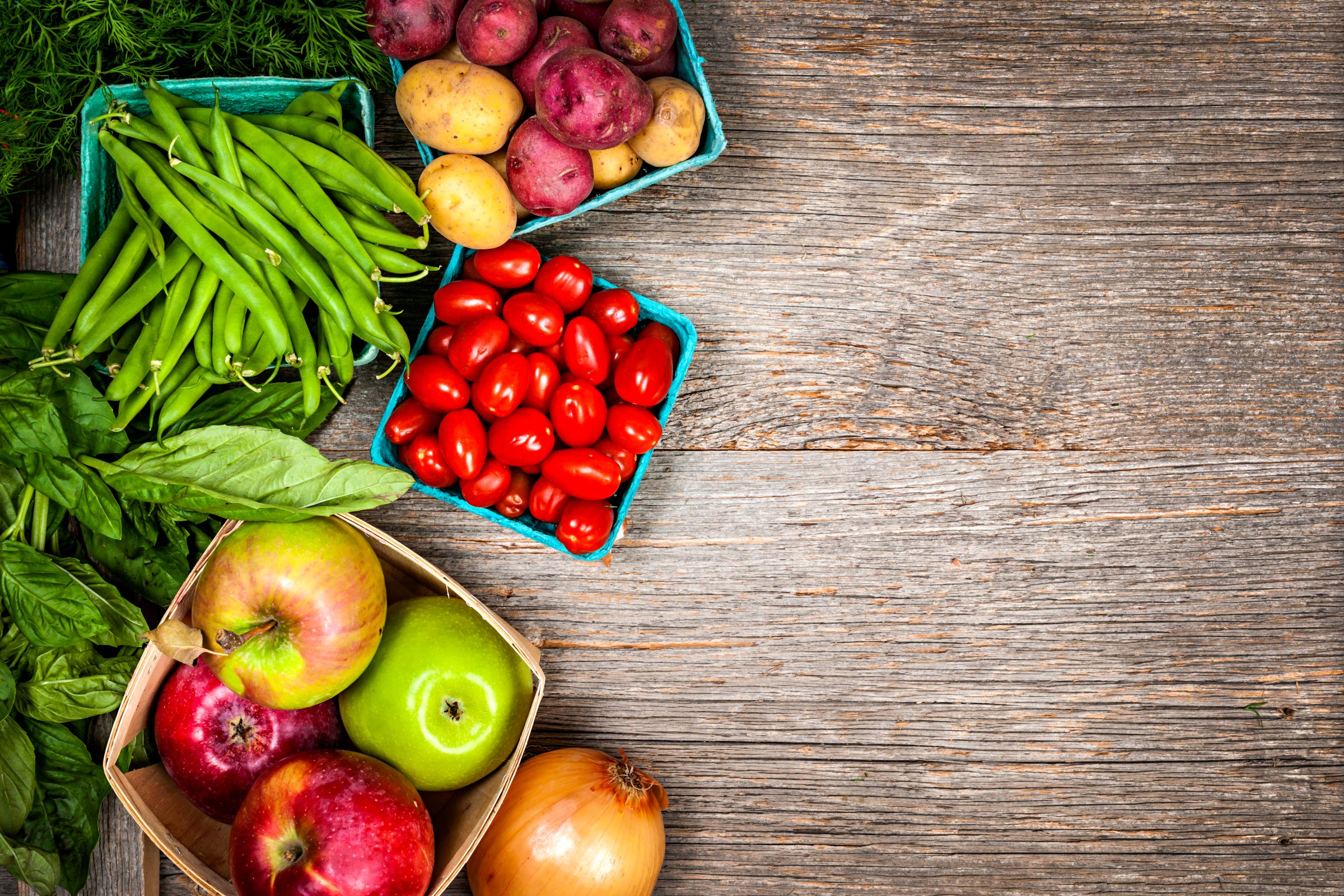
1. Plan ahead.
Last-minute grocery trips often lead to unneeded items and higher bills. Taking a few minutes to plan meals, incorporate weekly specials, check off items needed, and create a list before you shop gets you organized and saves you money. Put your list in a prominent place so you won’t forget it, and then stick to it.
2. Pick real food.
By “real food,” we mean foods in their natural state (such as apples versus sweetened, colored applesauce) or foods with as little processing and additives as possible. A good tip is to look for foods that contain five or fewer ingredients. Being able to pronounce and identify all five ingredients is a good sign too. These less processed foods are often cheaper than their processed counterparts, and usually contain more nutrients, fewer calories, and less sodium, added sugar, and fat.
Read more: How to Eat Clean
3. Buy in season.
Buying fresh produce can quickly add up, but knowing what fruits and vegetables are in season and then building your menus around those can save you up to $3 per pound or container. When produce is at its prime or “in season,” the quantities are plentiful, so the basic economics principle comes into effect: as supply increases, price decreases. For quick reference of what’s in season and when, see What’s in Season?
4. Opt for frozen veggies.
Frozen produce has a longer shelf life and helps with quick meal prep, but it’s also much cheaper than fresh since it’s picked and frozen when supply is plentiful. Stock up on your favorite vegetables when plain frozen varieties (no cheese or butter sauce) go on sale to make it easier—and less expensive—to consume more vegetables daily. And, because most fruits and vegetables are frozen soon after being harvested, frozen produce has the same amount of nutrients as fresh—sometimes more. If you have leftover fresh produce that you know you won’t use before it spoils, simply freeze it!
Read more: How to Freeze Veggies
5. Be picky about aisles.
The basics of a healthy diet are typically found on the perimeter of the grocery store; the center aisles house the more processed foods that aren’t usually essential and are often less healthy and more expensive. Grocery layouts are designed so if you go down one aisle, you feel the need to go down the rest. Instead of falling in this trap, make a point to only go down the aisles for things you need, so non-essential items do not tempt you.
6. Eat vegetarian two times a week.
Meat, poultry, and seafood are the center of many Americans plates. Yes, they’re good protein sources, but they’re also pricey. Consider using other high-quality, low-cost protein foods such as beans, peas, eggs, and soy in two meals a week. To illustrate the cost-savings these vegetarian proteins offer, check out the comparison below. If you’re still hesitant, start simple with an omelet or frittata or tossing beans into a pasta dish instead of roasted chicken.
7. Know what’s worth buying organic.
The USDA’s organic label is given to certified growers who meet defined rules for growing produce—largely rules that limit chemicals in the growing process. While few doubt that fewer chemicals are better, organic produce is costly. Splurge on the organic produce that tends to have higher levels of pesticide residue—things like cherries, strawberries, and bell peppers—and then purchase less expensive, conventional varieties for the rest of your produce (See Editors’ Guide to Organics for more details on what’s worth the splurge). There’s the misconception that organic produce has more nutrients, but research hasn’t proven this true; nutrients are about the same in both organic and conventional.
Read more: 5 Secrets of a Pro Grocery Shopper
8. Don’t be misled.
Packaging terms like “fat-free,” “low sodium” and “high fiber” are based on a food’s nutrients and have very specific meanings defined by the FDA. However, other labels like “natural” sound good but aren’t substantiated by science, making it confusing for shoppers. In fact, claims like those to “improve memory” or “support the immune system” don’t really mean anything yet, aside from making a product sound like it’s nutritionally superior and worth the extra money. Don’t get sucked into the marketing. If it sounds too good to be true and can’t be backed up by the Nutrition Facts panel, save your money.
This article originally appeared on CookingLight.com
More Must-Reads from TIME
- Donald Trump Is TIME's 2024 Person of the Year
- Why We Chose Trump as Person of the Year
- Is Intermittent Fasting Good or Bad for You?
- The 100 Must-Read Books of 2024
- The 20 Best Christmas TV Episodes
- Column: If Optimism Feels Ridiculous Now, Try Hope
- The Future of Climate Action Is Trade Policy
- Merle Bombardieri Is Helping People Make the Baby Decision
Contact us at letters@time.com